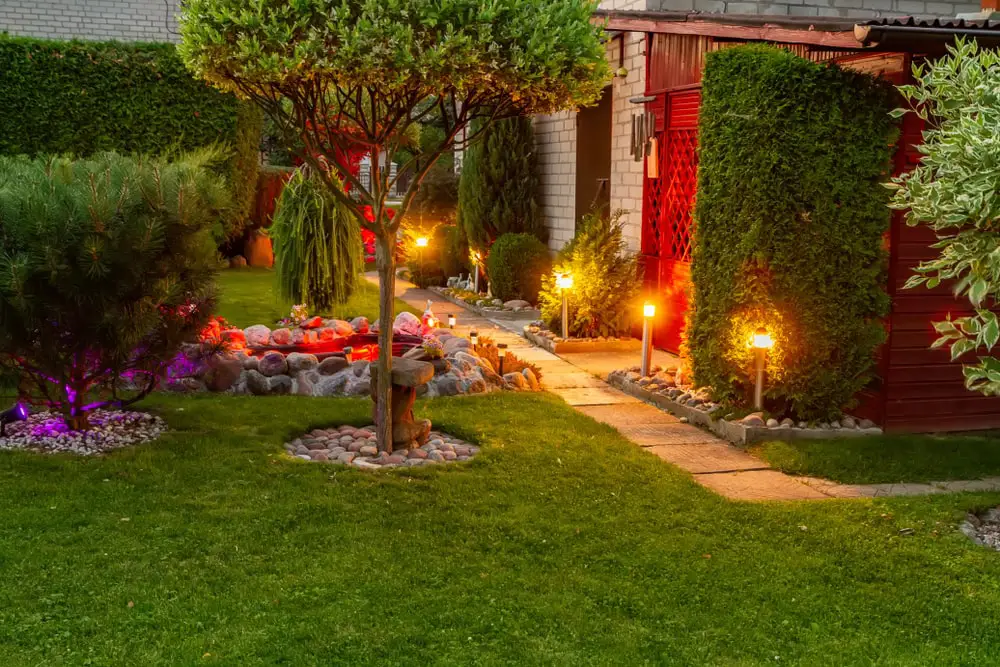Hilton Head Landscapes Fundamentals Explained
Hilton Head Landscapes Fundamentals Explained
Blog Article
Hilton Head Landscapes Things To Know Before You Buy
Table of ContentsFascination About Hilton Head LandscapesIndicators on Hilton Head Landscapes You Should KnowFascination About Hilton Head LandscapesWhat Does Hilton Head Landscapes Mean?Unknown Facts About Hilton Head LandscapesWhat Does Hilton Head Landscapes Mean?Some Known Facts About Hilton Head Landscapes.
Line develops all types and patterns and can be used in a variety of means in the landscape. Line in the landscape is produced by the edge in between 2 materials, the summary or silhouette of a kind, or a lengthy direct attribute. Lines are an effective tool for the developer due to the fact that they can be utilized to create an infinite variety of forms and forms, and they regulate motion of the eye and the body.

Lines can have one or even more qualities, such as those defined listed below, but they usually offer various functions. Figure 1. Lines in the landscape - landscape design hilton head. The residential or commercial properties of lines identify exactly how individuals reply to the landscape, both psychologically and literally. Straight lines are structural and forceful; they develop a formal personality, are normally connected with a balanced design, and lead the eye straight to a focal point.
Examine This Report on Hilton Head Landscapes
Curved lines create an informal, natural, unwinded character that is connected much more with nature and unbalanced balance. Bent lines relocate the eye at a slower rate and include secret to the area by producing concealed sights.
Upright lines in the landscape include tall, narrow plant product, such as trees, or tall structures, such as an arbor or a bird house on a pole. Horizontal lines move the eye along the ground aircraft and can make a room really feel larger. Low lines are more restrained and develop a sensation of remainder or repose.
Not known Facts About Hilton Head Landscapes
Reduced lines are produced by low yard walls, sidewalks, and brief hedges. Lines are utilized to attract types on a strategy. In plan view, they specify plant beds and hardscape areas. Lines are also created by the upright types of built functions and plant material. There are 3 primary line kinds that create type in the landscape: bedlines, hardscape lines, and plant lines.
Bedlines link plant material to your home and hardscape due to the fact that the eye follows the line, relocating the look through the landscape. Hardscape lines are developed by the side of the hardscape, which defines the constructed structure. Line can likewise be created by lengthy and narrow products, such as a fencing or wall.
Getting My Hilton Head Landscapes To Work
Kind is discovered in both hardscape and plants, and it is typically the leading visual component that spatially arranges the landscape and frequently establishes the style of the garden. The type of structures, plant beds, and garden accessories likewise identifies the general type style of the garden. Official, geometric types consist of circles, squares, and polygons.
Plants produce type in the garden through their details or silhouettes, however kind can additionally be specified by a gap or negative space between plants - Landscaping bluffton sc (https://www.metal-archives.com/users/h1tnhdlndscps). Circles can be cycles, or they can be divided right into half circles or circle segments and combined with lines to create arcs and tangents
The Greatest Guide To Hilton Head Landscapes
Circles are a strong style form due to the fact that the eye is always attracted to the center, which can be made use of to emphasize a focal factor or connect other kinds. Circular types in hardscape and yard panels.
The square kind can likewise be fractional and previously owned repetitively to develop a grid pattern. Unlike circles, squares are stronger on the sides, which can be lined up or overlapped to develop special patterns and even more complex types. Polygons are many-sided forms with straight sides. Triangles, as an example, are three-sided polygons.
Twisting lines typically imitate the all-natural training course of rivers Click Here or streams and can be explained as smooth lines with deeply bent wavinesses. Twisting lines (Number 3) work well for paths, plant bedlines, and completely dry stream beds. Twisting lines can add rate of interest and secret to a yard by leading viewers around edges to find brand-new views and areas.
The Buzz on Hilton Head Landscapes

Figure 5. Fragmented edges: stepping stones in pathway. Form is the most enduring quality of a plant (bluffton landscaping). https://www.anyflip.com/homepage/laavm#About. Common plant kinds are well developed and standard, as kind is one of the most constant and identifiable attribute of plants. Type can also be created via the massing of plants, where the total mass produces a different form than a specific plant.
An extremely different form must be used with careone or two work well as a prime focus, but way too many produce disorder. Natural plant forms, instead than over-trimmed kinds, should establish the mass of the composition. The importance of general kind is essentially depending on the checking out perspectivethe form of a tree can appear quite different to an individual standing under the canopy versus seeing the tree from a range in an open field.
Hilton Head Landscapes Fundamentals Explained
Plant forms additionally produce and define the gap or open spaces between the plants, developing either convex or concave forms in the voids. High-arching tree branches usually create a concave open room under the branches, and a round canopy with reduced branches fills up the space to develop a convex form in the open room under the tree.

Report this page